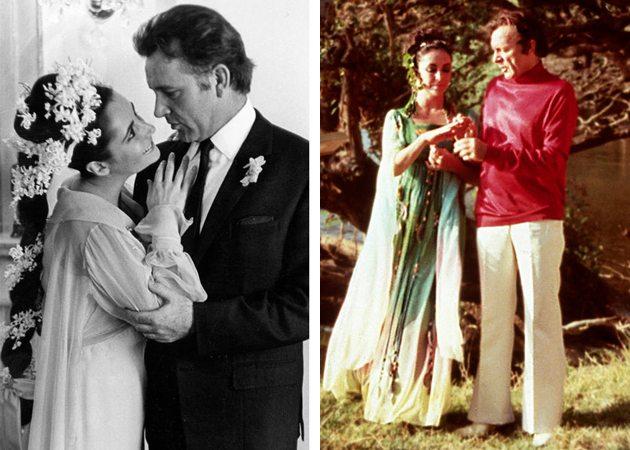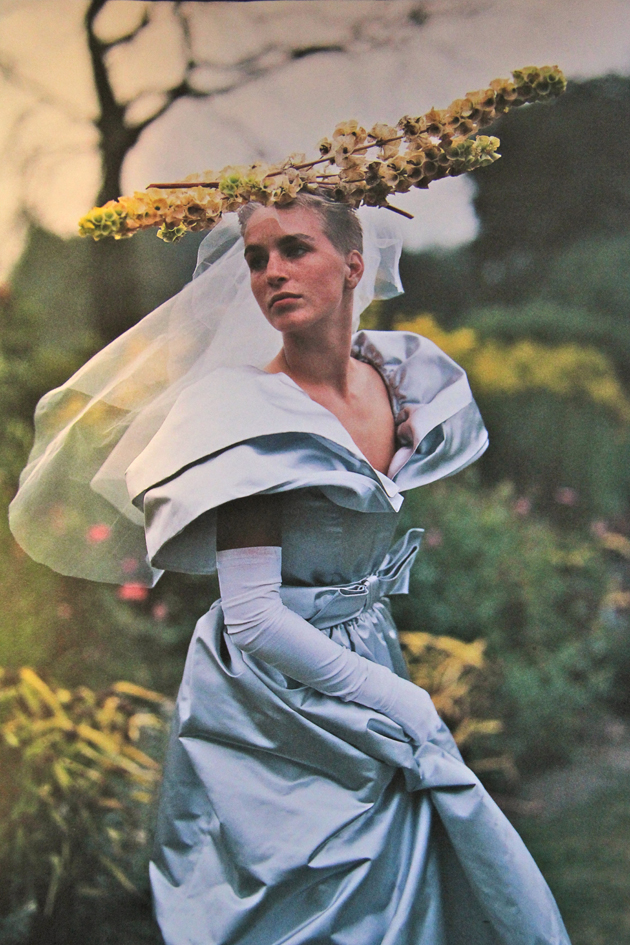
The word that can best describe Gina Fratini’s practice, and her life as well, is, for many reasons, ‘natural’. Natural, for her, meant to get involved in fashion; natural was to sense the potential, in a London still drenched in the swinging sixties, of flowing fabrics – only natural ones, of course – she had known in her years in the Middle East; and again natural was to develop close relationship with her devoted clients, who were ambassadors of her well recognisable, naively elegant style.
Despite the Italian sounding name, Gina Fratini is an all-British fashion designer who established her own fashion house in the middle of the vibrant swinging sixties in London. Born Georgina Caroline Somerset Butler, she owns her pen name to her second husband, an Italian artist Renato Fratini. The daughter of a government official, she was born in Japan, raised between the Middle East and India, but chose England as her basis, and soon became on of the ‘hot names of the British fashion scene’. Her interest in design took her to study at the prestigious Royal College of Arts, where she met dancer Katherine Dunham, who asked her to tour with her and her ballet company as assistant designer. Fashion, from them on, became her life. Two years after travelling the world with Dunham, she came back to London and set up her eponymous fashion house.
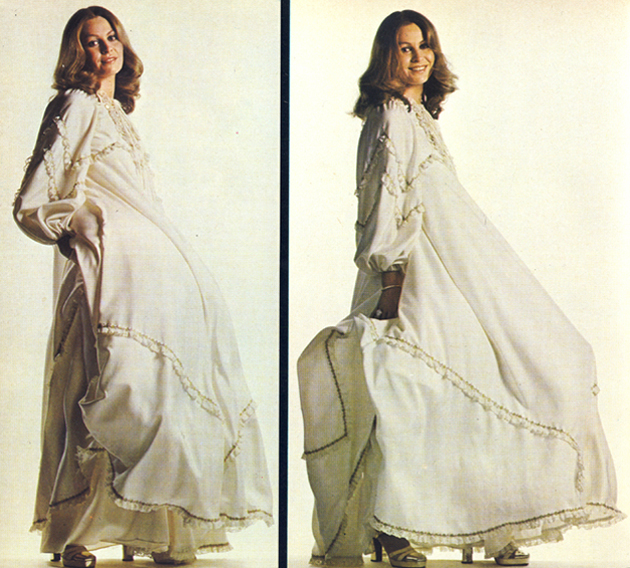
Gina Fratini made of flowing, multi-layered, soft dresses with delicate prints her signature. She has always been more fascinated by the qualities of fabric itself, than by the design and construction of clothes. All her inspiration came from the material she had in her hands, as she could nearly feel the potential of that fabric and enhance it with apparently simple dresses cut to enhance the intrinsic characteristics of the material she was dealing with. She had been capable of seizing the zeitgeist of her time, feeling the shift of taste from the close fitting, short designs of the 1960s to a more relaxed and retro look, which will become the image of 1970s ‘Britishness’, epitomised by iconic ‘hippy’ designers as Zandra Rhodes and Barbara Hulaniki. “I think I was the first to believe that amusing fabric is more important than close fit. I like soft fabric, but only natural ones like pure silk or pure cotton. I cut everything in bias and just let it fall into the person. I like movement. There’s nothing more fascinating than a woman flowing instead of walking.”
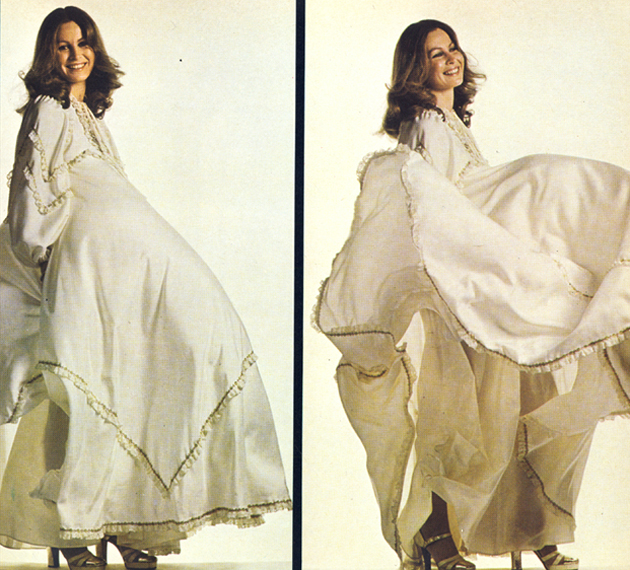
Fit was the issue of an argument with one of her famous clients, Princess Margaret. ‘She insists on a fitted bodice. That really goes against my grain, so we compromise on the issue.’ The list of personalities who dressed in Fratini’s creations is long and filled with ranting names, such as Princess Anne, Ursula Andress, Raquel Welch, for whom Fratini not only provided everyday clothes, but was also requested by the actress herself as her personal costume designer for the movie ‘Bedazzled’. Princess Diana continued to be faithful to Fratini’s designs even after the shut down of her fashion house in the 80s; and even Elizabeth Taylor, known for her preference for flowing, flouncy gowns and caftans, chose Gina Fratini to design the dress in which she married Richard Burton for the second time.
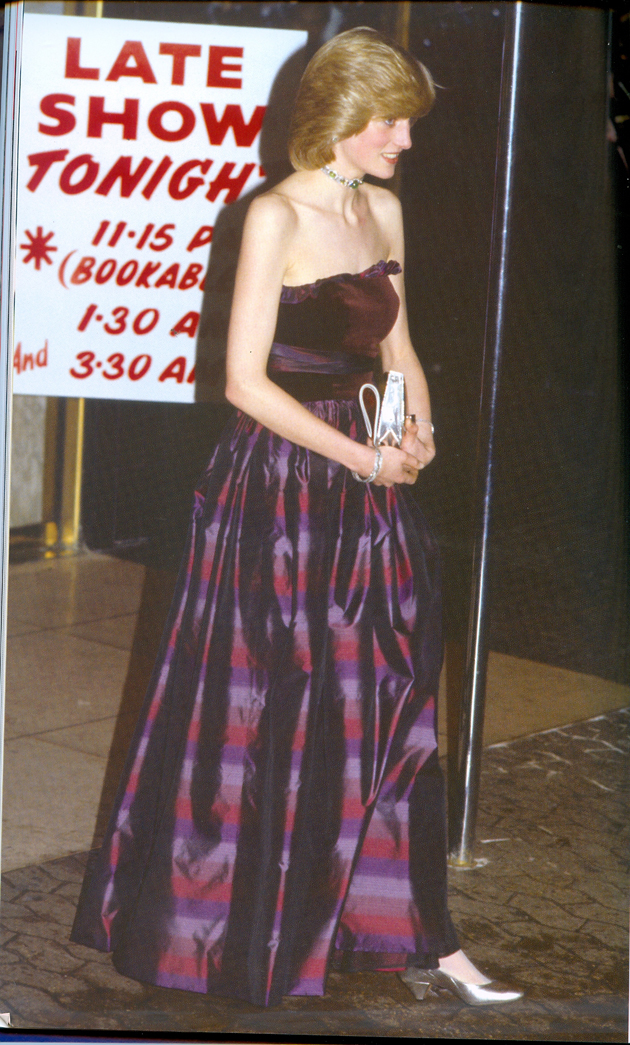
Gina Fratini firmly believed elegance had to be a way of life: an attitude coming out naturally every moment of every day, and not a superficial apposition to put on and off when the occasion requested. A position that recalls the ‘effortlessly chic’ style designers are seeking hard to convey in their contemporary collections, and that came out so easily from the layered, romantic look of Fratini’s creations. ‘I believe Elegantes want to dress up even if they are headed for the kitchen. A firm fashion attitude makes living palatable.’ Elegance as a way to appreciate life in apparently meaningless details; fashion as a gratifying delight to enjoy naturally, of course.
